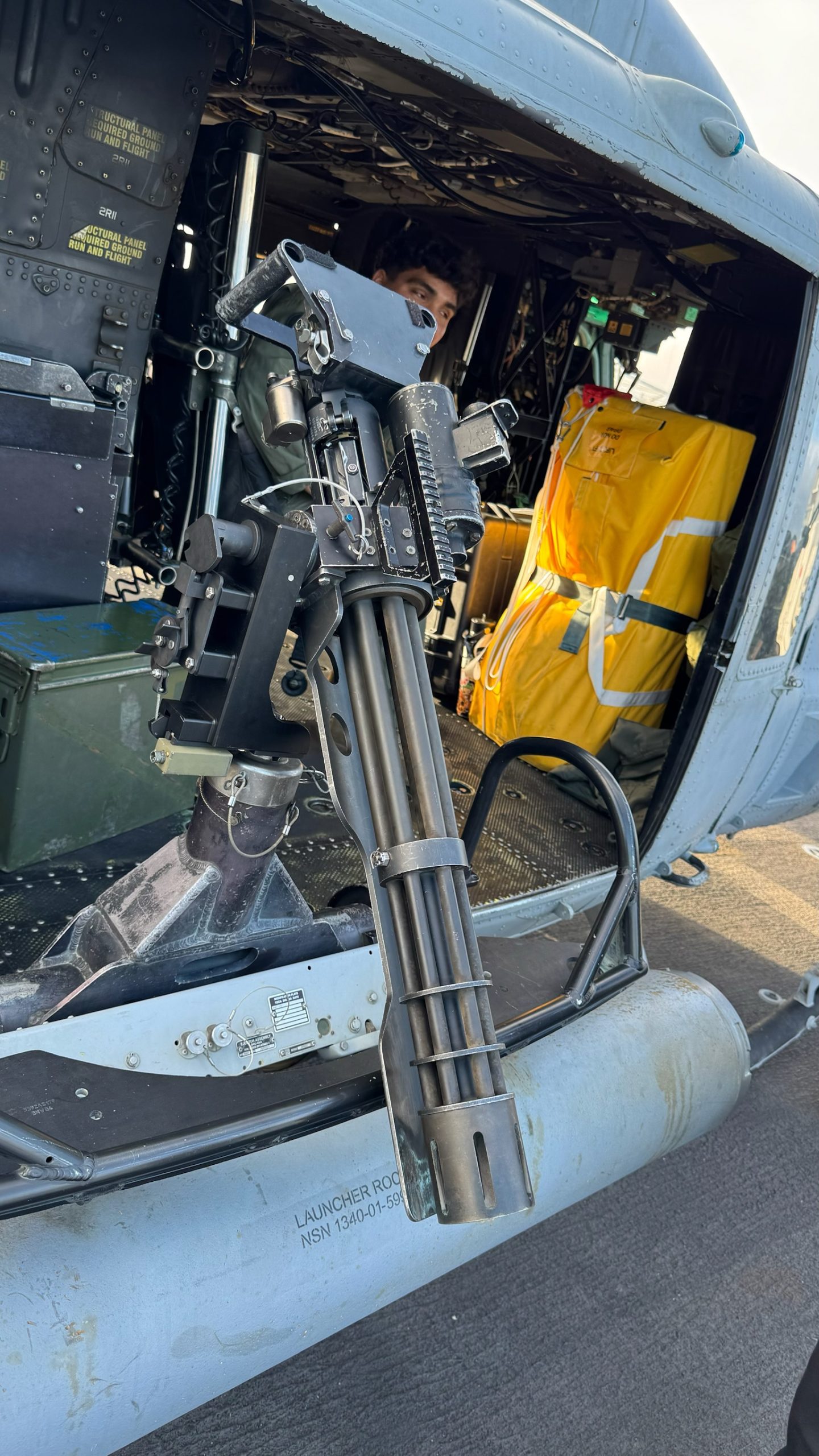Imagine Training With a Minigun
Picture this: a GAU-17/A Minigun spitting out 2,000-6,000 rounds per minute. That’s anywhere from $1,000 to $3,000 in ammo costs for a single minute of trigger time. Fun? Sure. Practical? Not unless you have a trust fund to blow through. Most of us are better off with a trusty .22 plinker, a solid set of fundamentals, and enough practice to build confidence in our skills.

But here’s the rub: in the endless rabbit hole of shopping for accessories and gear, we often forget the most important budget item—ammo. Enough rounds to collapse a steel shelf. Enough time to wear down a trigger finger. If Costco sold bulk 9mm, you’d catch me in the checkout line every weekend.

The Myth of Gear Over Skill
We all love the allure of shiny gadgets and cool attachments. Who doesn’t spend hours tweaking their Warzone loadout, dreaming of an endless attachment system? Drool-worthy? Absolutely. But in the real world, all the cosmetic mods in the world won’t make you a better shooter if you don’t practice.
Gear is great, but precision, accuracy, and muscle memory are the apex. That optic? Cool. That custom trigger? Nice touch. But they don’t mean much without the skills to back them up. As Reddit user Stubeezy said, “Stop worrying about your shiny new object and get really, really good with the raw tooling.”
The Cost of Not Practicing
Here’s the reality: every gun feels different. Grip angles, recoil, trigger weight—they’re all unique. The only way to master them is to put in the work. Skip the endless accessory scavenger hunt and focus on what matters:
- Trigger control: The difference between a shot you meant to fire and a shot you didn’t.
- Recoil management: Knowing how your firearm behaves so you can stay on target.
- Consistent reps: So many that you could clear a malfunction in the dark with gloves on.
The goal is to build comfort and confidence with your weapon, no matter how barebones it is. As one Redditor put it, “A maestro is a maestro, nothing less. Be the guy that wins because you’ve mastered the craft.”
The Curse of Shopping Mode
We’ve all been there—hours lost comparing grips, stocks, or muzzle devices. Let’s be honest: sometimes we shop because it’s easier than admitting we need to hit the range. Accessories won’t make up for the fact that you flinch every time you pull the trigger or that your follow-up shots are slow and sloppy. Practice does.
Practical Practice Tips
Start Small: Don’t underestimate a .22. It’s cheap, accurate, and perfect for honing fundamentals without breaking the bank.
Dry Fire: Zero cost, infinite benefit. Work on trigger discipline, sight alignment, and grip—all from the comfort of your living room.
Track Your Progress: Keep a shooting log. Measure your group sizes, track your times, and set achievable goals.
Simulate Real Scenarios: Train as if you’re defending yourself. Use drills that involve movement, quick target acquisition, and reloading under pressure.
Budget for Ammo: Skip that unnecessary gadget and buy an extra case of rounds instead.
Accessories vs. Skills: A Cold Truth
Accessories can fail. Batteries die, mounts loosen, and fancy gadgets can become dead weight in critical moments. Your skills, however, are always with you. Reddit user Adventurous_Stack put it well: “If you rely on yourself above all else, you will overcome the weakness in relying on accessories.”
That’s not to say you can’t enjoy a tricked-out rig, but don’t let it become a crutch. Train first, accessorize later.
The Warzone Mentality

Sure, playing with loadouts is fun, whether it’s on a screen or at the local gun shop. But in the field, there are no respawns. Instead of dreaming about maxing out attachment slots, spend that energy perfecting your aim, mastering reloads, and building muscle memory.
The Value of Simplicity
Even Navy SEALs, the epitome of high-speed, low-drag, understand the value of less. As the saying goes, “Two is one, one is none,” but they also live by the mantra that less is more. They strip their setups to the essentials for reliability. You don’t need to carry the entire accessory aisle to get the job done.
Why Practice Matters
When SHTF, you won’t have time to fiddle with settings or rely on gear to save the day. What matters is how you perform under pressure—and that comes down to practice. “Slow is smooth, smooth is fast” isn’t just a mantra; it’s the truth. Master the basics until they’re second nature. Then, you’ll know you’re ready for anything.
Final Thoughts: Train Hard, Shop Smart
At the end of the day, a minimalist approach to training will do more for your skills than a maxed-out accessory list. Start with the basics. Master your firearm. Put in the rounds. Then, if you still want that custom Cerakote or skeletonized grip, go for it. Just know that skill beats gear every time.
So grab your plinker, load some rounds, and hit the range. Forget about cosmetics and focus on precision. After all, the best upgrade isn’t on your gun—it’s in your hands.

Leave a Reply